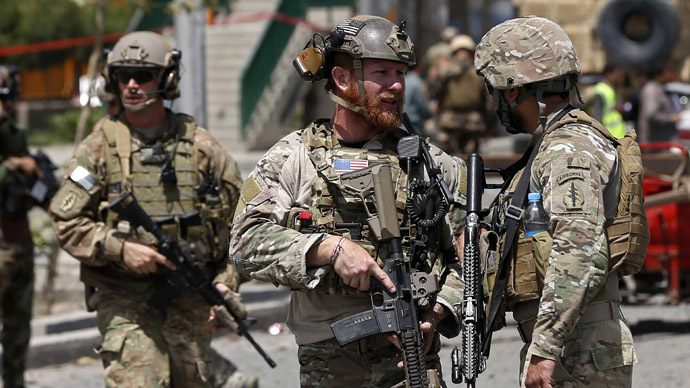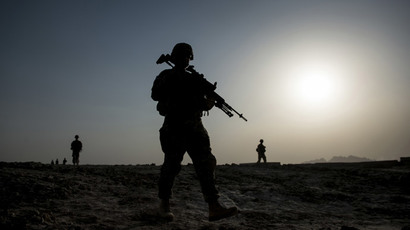Miscommunication blamed for the deaths of five US servicemen in Afghanistan

Documents released by the Pentagon this week show that five American soldiers and an Afghan colleague died as a result of miscommunication earlier this year during one of the worst instances of friendly fire since the Afghan War began nearly 13 years ago.
The results of a United States military investigation concluded that the June 9, 2014 incident that claimed the lives of six soldiers could have likely had been prevented had the troops better communicated with one another. Ultimately, a B-1 bomber was called in by a ground crew to assist with an airstrike, but the US-chartered plane unloaded two missiles on the American troops and their Afghan ally.
"The key members executing the close air support mission collectively failed to effectively execute the fundamentals, which resulted in poor situational awareness and improper target identification,” Air Force Maj. Gen. Jeffrey Harrigian wrote in the nearly 300-page report released by the Pentagon this week following requests made under the Freedom of Information Act. “While this complex combat situation presented a challenging set of circumstances, had the team understood their system’s capabilities, executed standard tactics, techniques and procedures and communicated effectively, this tragic incident was avoidable.”
The Pentagon’s official report rings true to statements made by eyewitnesses earlier this year when the tragic event unfolded in southern Afghanistan.
“ISAF troops were returning to their bases after an operation when they were ambushed by the insurgents. The airstrike mistakenly hit their own forces and killed the soldiers,” local Police Chief Ghulam Sakhi Roghlewanai said then, referring to the International Security Assistance Force.
A Pentagon statement said then that investigators are “looking into the likelihood that friendly fire was the cause. Our thoughts and prayers are with the families of these fallen.” Indeed, three months later the official account released by the US Department of Defense suggests that an American bomber is to blame for the deaths of the six soldiers.
According to Harrigian’s report, crew members involved in the event failed to realize that the bomber would be unable to detect signals on the ground that identified the soldiers as friendly forces.
“All key leaders in this operation, including the Ground Force Commander, the JTAC [Joint Terminal Attack Controller] and the aircrew of the aircraft, incorrectly believed that the aircraft’s targeting pod was capable of detecting the friendly marking devices used by Coalition forces in this operation,” he wrote. “In fact, the aircraft’s targeting pod was not capable of detecting the marking devices.”
“One of the soldiers, Staff Sgt. Scott R. Studenmund, 24, of Pasadena, had an infrared strobe light affixed to the back of his helmet, which was intended to notify friendly forces of their location,” the Los Angeles Times reported. “The strobe cannot be seen by the naked eye but can be detected by a heat-seeking sensor.”
As a result, the report continues, the JTAC passed directions to the aircrew ordering them to drop bombs on a targeted location, where Coalition forces were stationed but undistinguishable from hostile troops. Twenty-one minutes after calling in an airstrike, the plane unloaded two bombs, killing all six.














